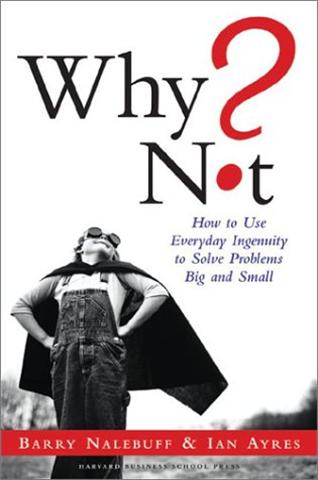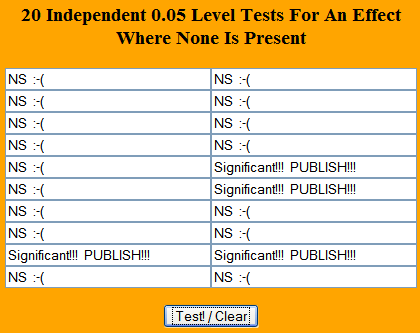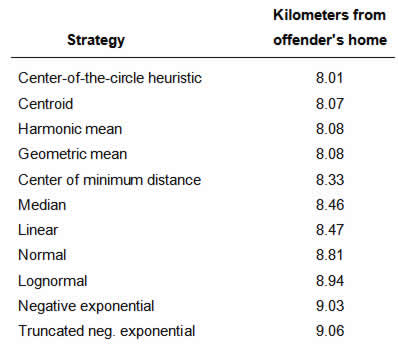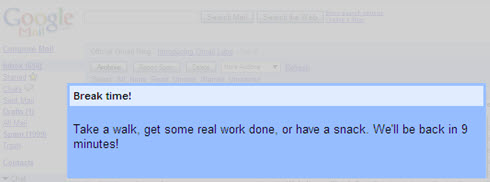POSITIVE / NEGATIVE / ZERO SUM ADVICE AND THE JOB MARKET

Every year, Decision Science News republishes this wonderful, caring advice on the AMA (Marketing) job market. Recently, our friend and kindred blogger Andrew Gelman asked how much of the advice is positive sum. Your humble editor, not knowing much about what positive sum advice is, looked into it.
A cocktail-party-worthy example of things positive / negative / zero sum comes from the entertaining Why Not?: How to Use Everyday Ingenuity to Solve Problems Big And Small by Barry Nalebuff and Ian Ayres, who argue that The Club (a steering wheel lock) is zero sum while LoJack (a chip in your car that reveals its location) is positive sum. Their logic is that The Club simply causes car thieves to chose another car to steal instead of yours. So if you get +1 points for not having your car stolen, some other schlub gets -1 points for losing a car and -1 +1 = 0, the sum of the game. They then argue that LoJack leads the police to the location of the car theft rings, which they can subsequently bust. With the car thieves in jail, car theft overall goes down and the net benefit to society is argued to be positive.
by Barry Nalebuff and Ian Ayres, who argue that The Club (a steering wheel lock) is zero sum while LoJack (a chip in your car that reveals its location) is positive sum. Their logic is that The Club simply causes car thieves to chose another car to steal instead of yours. So if you get +1 points for not having your car stolen, some other schlub gets -1 points for losing a car and -1 +1 = 0, the sum of the game. They then argue that LoJack leads the police to the location of the car theft rings, which they can subsequently bust. With the car thieves in jail, car theft overall goes down and the net benefit to society is argued to be positive.
Why Not? is a book we wholeheartedly enjoy and endorse, despite our upcoming diss of one of its points. The authors state that the net value of The Club to society is zero. Not probably zero, but zero. But dear authors, are you sure that people always steal another car upon seeing The Club? Is there a a fixed quantity of crime that each criminal must commit? A law of conservation of crime? In the Club / LoJack example, every criminal either ends up shifting crime to where its easier, or in jail. This blog’s inutition is that some crime just disappears when there are fewer temptations in the environment, much like some overeating disappears when there are fewer oversized portions in the environment. This blog has moved between the US and Europe many times and experienced first-hand the effect of smaller portions on body weight.
(Note also that the conservation of crime idea would suggest that in a fully LoJacked future, the new generation of criminals (or those just spring from the joint) would steal something else. How’s that positive sum?)
Back to the academic job market. Andrew’s comments are indented. The quotes within the indents are Andrew quoting Decision Science News.
If I tell people a secret way to put their proposals at the top of the pile for a granting agency, that’s zero-sum
We will buy that. The way that a stack works, something going to the top position moves the things formerly above it down one position such that the sum is zero. This point will come in later.
Just for analogy, if I give people advice about how to make cleaner powerpoint presentations, that’s positive-sum (better communication for all)
Or is it? Let’s say we were an obnoxious blog. We could then argue that the person who receives said PowerPoint advice benefits and the person who doesn’t does not. To this you might say, yes, but Decision Science News, presenters are not in a fixed sum competition in which one person’s gain is always another person’s loss. But is this true? If I’m in your field and my PowerPoints rock, I may hurt your chances of getting the scarce endowed chair, winning the teaching award, landing the best book contract on our obscure topic, etc.
“Get yourself a room in the conference hotel, preferably on the floor where the express elevator meets the local elevator for the upper floors.”: Zero-sum. If you get a room at the conference hotel, somebody else will have to find a room elsewhere.
Job candidates generally benefit from being in the conference hotel and on the elevator-transfer floor. Regular conference attendees do not benefit from being on the noisy, congested transfer floor, so both win if the job-seekers are on that floor. About conference hotel capacity, every single seeker could stay in the conference hotel easily (and probably most could stay on the transfer floor). Some non-seekers might like to stay at the conference hotel (though many don’t like to), but seekers are most benefited by staying in the conference hotel, and most harmed by not staying in it because of the running around they must do. Sounds positive sum to us.
“One of the biggest risks facing you is that you will be forgotten. Make sure the interviewers know something unusual about you.”: Zero-sum. Or maybe positive-sum, I don’t know.
That would be positive sum. If you think, “but Decision Science News, one person being remembered means that another person will be forgotten”, we delight in declaring that memory is not like a stack of paper. As one candidate’s probability of being remembered increases, the other candidates’ probabilities do not decrease in proportion. Memory, like much of the world (we are starting to realize as we write this), is not zero sum. And if more applicants are remembered, the better the chances that the market will arrive at good matches between schools and candidates, and that’s a good thing.
“It’s a good idea to hit a school with 2 packets, 3 if you suspect they’re a little disorganized.”: Negative-sum. I’m not saying this wouldn’t work–a couple of years ago, our department missed out on a top candidate because we literally lost his file. But it can’t be good to have duplicate letters flying around.
Or can it? When the job market fails, it can also be quite bad: couples can get stuck in different cities, people can take jobs then relocate a year later, etc. These events have environmental impact, too.
“Get your advisor / sponsor to write a cover letter encouraging people to meet with you at AMA.”: Zero-sum, I think.
This isn’t even really advice, more of a how-to. Candidates must have introductory letters if they want to be in the game at all. It’s like saying “if you want to get from Columbia to NYU, head downtown”.
“Don’t gossip.”: Negative-sum. I say this because Dan illustrates with a story where the gossiper provided him with useful information! So the gossip was probably helpful.
Kidding aside, I would guess that there are laws concerning rumors in financial markets because they find them to be bad for the larger system.
Given that in most real problems, one can futz with the reference classes, populations, probabilities and payoffs to arrive at whatever total one wishes, this blog wonders if zero sum analysis actually adds up.
 Subscribe to Decision Science News by Email (one email per week, easy unsubscribe)
Subscribe to Decision Science News by Email (one email per week, easy unsubscribe)











